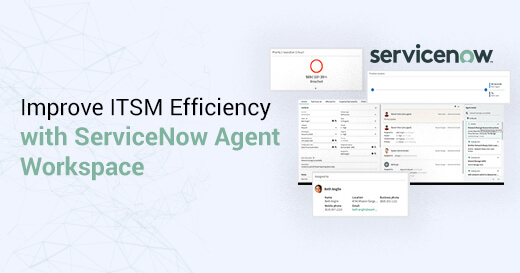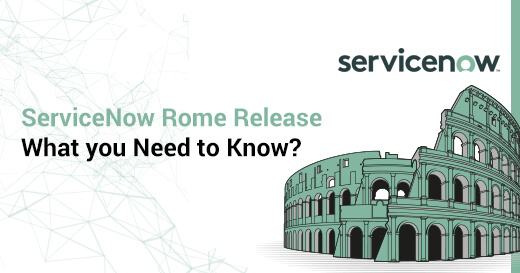ServiceNow Virtual Agent: The Customer Service Model of the Future
Written by Mohsin Farooq
Senior Software Engineer at Royal Cyber
Customer service is at the heart and soul of a company. ServiceNow Virtual Agent can seamlessly interact with end-users, answer customer queries, and resolve issues in a fraction of a second.
Today companies need a modern, automated, and intelligent service model to deliver the experience that today’s customers want. They fear to lose customers if the services they offer are not acceptable and lack purpose and intuitive access.
Even though customers are demanding a superior customer experience, most companies are still relying on outdated ways to help them. Companies are using rigid, cumbersome, and high-cost service model that takes longer to resolve issues. These service models, in turn, lead to customer dissatisfaction and, ultimately, loss of revenue.
ServiceNow introduced a chatbot solution, Virtual Agent, to take service management to the next level in its London release. The ServiceNow agent intelligence helps users retrieve information from the system without waiting for the agent. They provide the user with self-service capability that helps them resolve their queries and focus on their work instantly. The virtual agent works 24X7 and handles over 50% of the routine and repetitive tasks, improving operational efficiency. The support staff can focus on work that will add value to the business.
How does ServiceNow Virtual Agent work?
As part of the ITSM Professional package, Virtual Agent provides custom responses while communicating with users. It uses Natural Language Understanding (NLU), which has made it more useful than any other chatbot in the market. The end users can interact using natural language and the agent understands and responds like a human being. If the user has an IT issue, the agent knows the equipment issued and resolves issues in seconds without human intervention. NLU improves response time and service experience. To better understand how it works, let us learn the virtual agent's two modes of operation.
Modes of Operation
Design
In the design environment, the administrator can modify the conversation flow, intent, or the trained NLU model. The modifications that the administrator publishes are visible only during the runtime.
Runtime
The runtime environment is the live and running environment for the Virtual agent. In this environment, the system interacts with the user and follows a published conversation by the administrator. All the responses regarding the entities and their intent are also published in the trained NLU model.
Components
Now you must have understood the virtual agent’s modes of operation. Let’s deep dive into the three main components of the agent.
1. Chat Interface: The chat interface is part of the ServiceNow service portal and is used directly by the user. The interface is the place where the user directly types in his queries or look for new services. The user statement is passed on to the virtual agent runtime engine, which then processes the request. The process in which the user inputs a statement to the chat interface is called chat utterance, which is passed to the Virtual Agent Runtime engine.
The business can use any third-party chat interface such as Microsoft teams or Slack for the virtual agent.
2. Virtual Agent (VA) Runtime Engine: When the user enters the query through the virtual agent's chat interface, the runtime engine processes the request by parsing the structure of the message. The actual intent and the message's entities are passed onto the NLU engine for the next steps. The NLU engine works on the purpose and entities received and sends the extracted intent to the VA runtime engine to continue the user's conversation.
The Dialog component controls the entire conversation flow and delivers the response to the user in the chat interface.
3. NLU Engine: The NLU engine receives the intent and entities from the VA runtime engine and provides a meaningful response to the user's query. It has a trained model, with sample sentences and phrases, which works on the VA runtime engine's message.
Benefits of ServiceNow Virtual Agent
The market has chatbot solutions that use Artificial Intelligence (AI) and NLU to deliver a superior customer experience. ServiceNow Virtual Agent provides some benefits that are hard to find anywhere else.
1. Native to the Now Platform: Virtual Agent uses ServiceNow data to personalize the conversation with the user. It can create and update records and connect the existing workflows of the user. The agent helps saves time and cost involved in complex integrations that require coding or dependence on a third-party.
2. Security: The business security team never faces trust issues and the data is always taken and used from within the ServiceNow cloud infrastructure. NLU models are trained on this data and the results are tailored according to the business's requirements.
3. Value Add: ServiceNow Virtual Agent conversations are pre-built and there is no need to create process flows and code to handle various topics. The system can deflect the most common IT, HR Service Delivery, and Customer Service conversations to the agent.
4. Built-in Insights: ServiceNow Performance Analytics has a real-time dashboard and KPIs that shows the most common types of requests that must be automated with the help of Virtual Agent. This dashboard gives an overall picture of how users interact with the Virtual Agent, the used channels, and where they need changes. The built-in insights help businesses make quick, informed decisions.
5. Live Agent Interventions: Suppose an escalation happens when a Virtual agent is interacting with a customer. In that case, the entire conversation is handed over to the real agent and the user doesn’t have to restart the conversation. The live agent intervention helps in quickly addressing issues of the customer.
What’s new in the Latest ServiceNow Paris Release?
ServiceNow Paris release has come up with several enhancements to the Virtual Agent. Below are the updates:
1. Customizable Chat Menu: We can customize the displayed chat menu to the end-users. Menu titles and items, including icons for phone, email, and live support, can be changed. Users can even set the order of the menu items.
2. Notifications for Web and Mobile Chat Client: The virtual agent in the web and mobile chat clients can send notifications directly to the users. The users can either start a new conversation when responding to the notification or complete new tasks.
3. Virtual Agent Lite: Standard ITSM customers can enable a new limited version of the virtual agent. The business needs to install ITSM virtual agent lite to use this feature. It comes with three predefined conversations for common IT support requests.
4. Custom Input and Response Controls: ServiceNow developers can create custom input and bot response controls using the advanced scripting language. The developers can make components such as sliders and video players.
5. Multi-language NLU Model Support: For NLU services supported in the virtual agent—ServiceNow NLU, IBM Watson Assistant, and Microsoft LUIS—you can bind topics to multiple language-specific NLU models. Authors can also test a topic in other languages from within the virtual agent designer.
Upgrade Now
ServiceNow Virtual agent has undergone significant enhancements and updates in the Paris release. Businesses must upgrade to the new release to stay current on the latest version of the ServiceNow and drive on-going innovation within the organization. Leveraging our partnership with ServiceNow, you can instantly execute the upgrade and check the ServiceNow instance.



